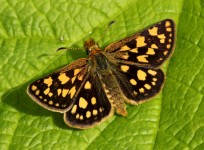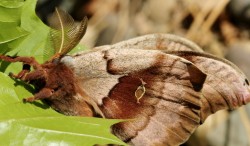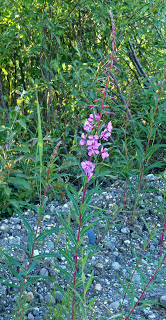Spring is full of firsts—first robin, first flower and first butterfly. Not necessarily in that order though. The first butterfly is often fluttering around before the first flowers bloom or even emerge from the warming soil.
Emerging from under a piece of loose tree bark or from a crack in a rock on a warm spring day is the mourning cloak butterfly. Just as turtles bask in the sun to warm their bodies, the mourning cloak butterflies will crawl out and open their wings to the sun to warm up.
The mourning cloak’s dark wings enable it to absorb heat from the sun’s ray on warm late winter days.
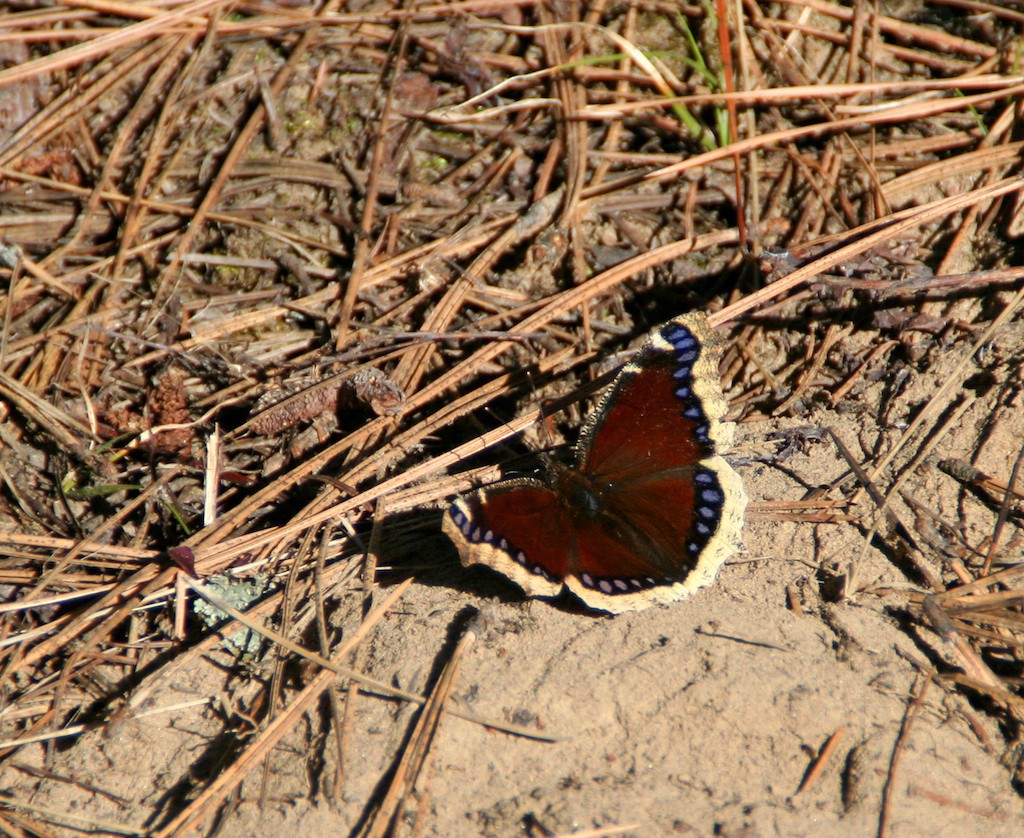
Mourning cloak butterflies are one of the few butterflies to overwinter as adults. Not many, if any, flowers are available for food, so mourning cloak butterflies feed on tree sap. As the sap begins to rise in trees it will ooze out of damaged areas, including sapsucker holes.
Like many other species in the spring, the first order of business is to find a mate. The males will perch in a sunny spot in the afternoon and wait for a receptive female.
After mating, the female will lay eggs on a twig of a host plant–willow, cottonwood, aspen, paper birch, hackberry or elm. Once hatched, the caterpillars will live communally in a web and feed together on the leaves of the plant.
The caterpillars are black, covered with tiny white dots and marked with a row of large orange spots along its back. The two-inch-long caterpillar also grows several rows of black spines which protect it from predators.
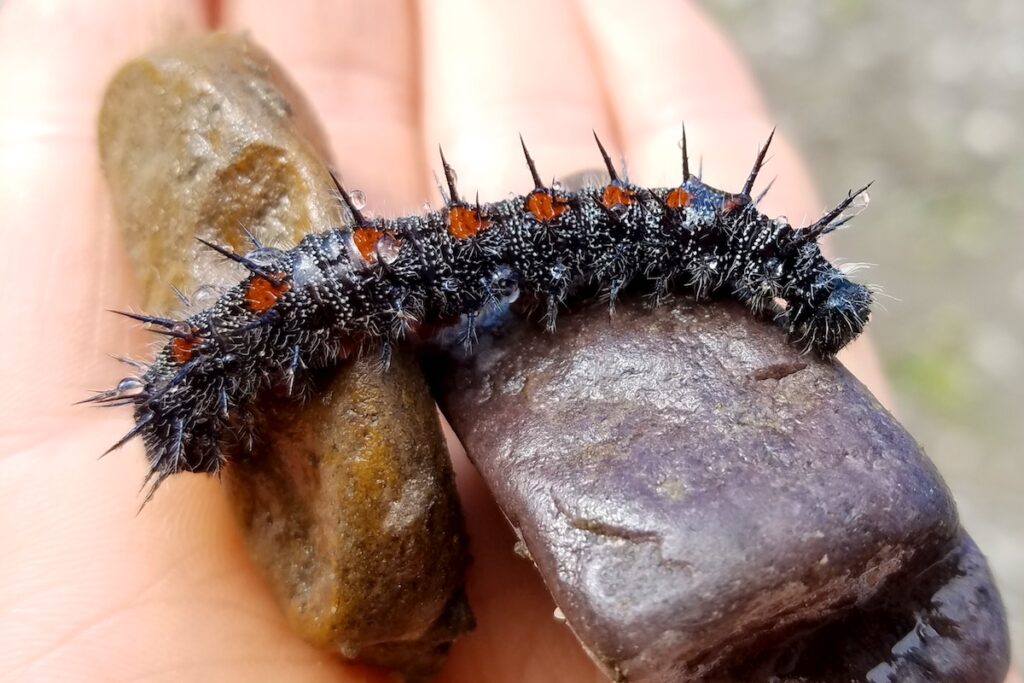
Unlike a turtle’s shell that grows with it, a caterpillar’s skin doesn’t stretch as it grows. Thus, the caterpillar molts (sheds its skin) several times before pupating. The last molt a caterpillar undergoes produces a chrysalis (hard outer shell).
When a mourning cloak pupates, it will create a spiky gray chrysalis to undergo metamorphosis. After 10 to 15 days (fewer days if warmer), an adult butterfly will emerge, typically in June or July.
The undersides of the mourning cloak’s wings are cryptically colored. The grayish black pattern that appears like dark tree bark helps protect the butterfly from predators.
Even though the mourning cloak butterfly is one of the longest living butterflies at 10 to 11 months, it doesn’t flutter around the whole time. The butterfly enters hibernation in both the summer and winter.
After emerging as a butterfly in summer, the mourning cloak will feed briefly before finding a sheltered spot to estivate until autumn. Estivation is the summer equivalent of hibernation to avoid heat and the lack of moisture.
Then in September, the mourning cloak butterfly will emerge once again to feed and store energy for winter hibernation (known as diapause in insects). Mourning cloak butterflies prefer to feed on tree sap and occasionally on rotting fruit and flowers.
Then as the day length becomes shorter the butterfly will find its winter hiding spot (under bark or in a rock crevice) and produce an antifreeze that prevents it from freezing solid.
The mourning cloak then waits in a suspended state until the first warm days of spring when it can emerge, bask in the sun and be the first butterfly in the woods.
Originally posted April 2013. Updated April 2024.

